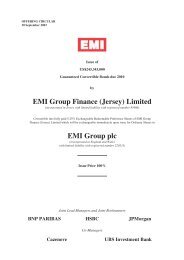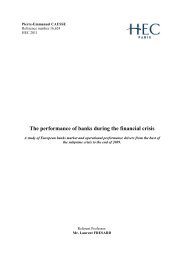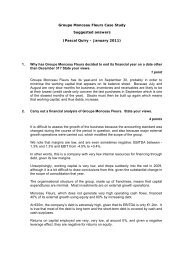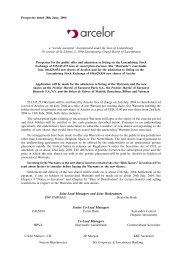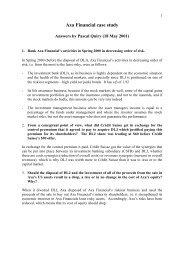Thesis_gd_final_vers.. - Vernimmen
Thesis_gd_final_vers.. - Vernimmen
Thesis_gd_final_vers.. - Vernimmen
You also want an ePaper? Increase the reach of your titles
YUMPU automatically turns print PDFs into web optimized ePapers that Google loves.
were responsible for much of the findings of profit efficiency improvement and cost efficiency<br />
worsening during the 1990s.<br />
iii) Technological change impact on bank productivity, profitability and product<br />
di<strong>vers</strong>ification<br />
Linking technological progress to bank productivity is difficult because technological change<br />
cannot be easily quantified and must rather be inferred from changes in productivity ratios<br />
overtime. Another problem comes from the fact that productivity is not influenced exclusively by<br />
technological change but also by the effectiveness with which technology is used. Then, it is<br />
difficult to account for the effects of technological change as it can impact banks in ways that are<br />
not captured by traditional productivity measures. If we look at credit scoring, it not only lowers<br />
underwriting unit costs, thus generating cost X-efficiency, but it may also help to improve the riskreturn<br />
of the loan portfolio by keeping the default rate constant while increasing the interest<br />
earned. This second improvement is usually not captured by traditional productivity measures.<br />
Studies suggest that improvement in service and product quality may also not be taken into<br />
account either because they result in price increases and are thus accounted for as inflation, or<br />
because of competitive pressure their profits are passed away to customers.<br />
The strong increase in ATMs number, the use of computers and other new technologies has<br />
allowed bank branches employees to focus on higher value-added activities and led to an increased<br />
efficiency measured by an increase on average of operating income per branch while the number<br />
of full-time employee equivalent (FTE) per branch has been reduced by 10% between 1985 and<br />
2000. Even though the investment in an ATM network at little or no charge to customers may<br />
have been considered as deteriorating productivity during the 1980s, in fact it improved<br />
productivity over the long run.<br />
At the bank level, Berger and Mester (2003) found a worsening of cost productivity of 12.5%<br />
annually more than compensated by revenue increases since profit productivity improved between<br />
13.7% and 18.5% annually over a period of time from 1991 to 1997. The main cause of the<br />
increasing profit productivity is a change in the product mix of commercial banks which occurred<br />
thanks to the combination of both deregulation and technological change.<br />
Despite the worsening of cost productivity, Asaftei’s findings suggest that from 2000 to 2005 large<br />
banks became more efficient, i.e. the gap between the best-practice banks and the rest of the banks<br />
decreased. On the contrary, small banks have experienced an increase in the gap between the bestpractice<br />
banks and the rest of the group. It highlights a growing heterogeneity among small<br />
institutions. Even though some small banks were able to keep up with the fast pace of<br />
technological progress, most of them are not able to implement the most recent technologies,<br />
- 16 -



